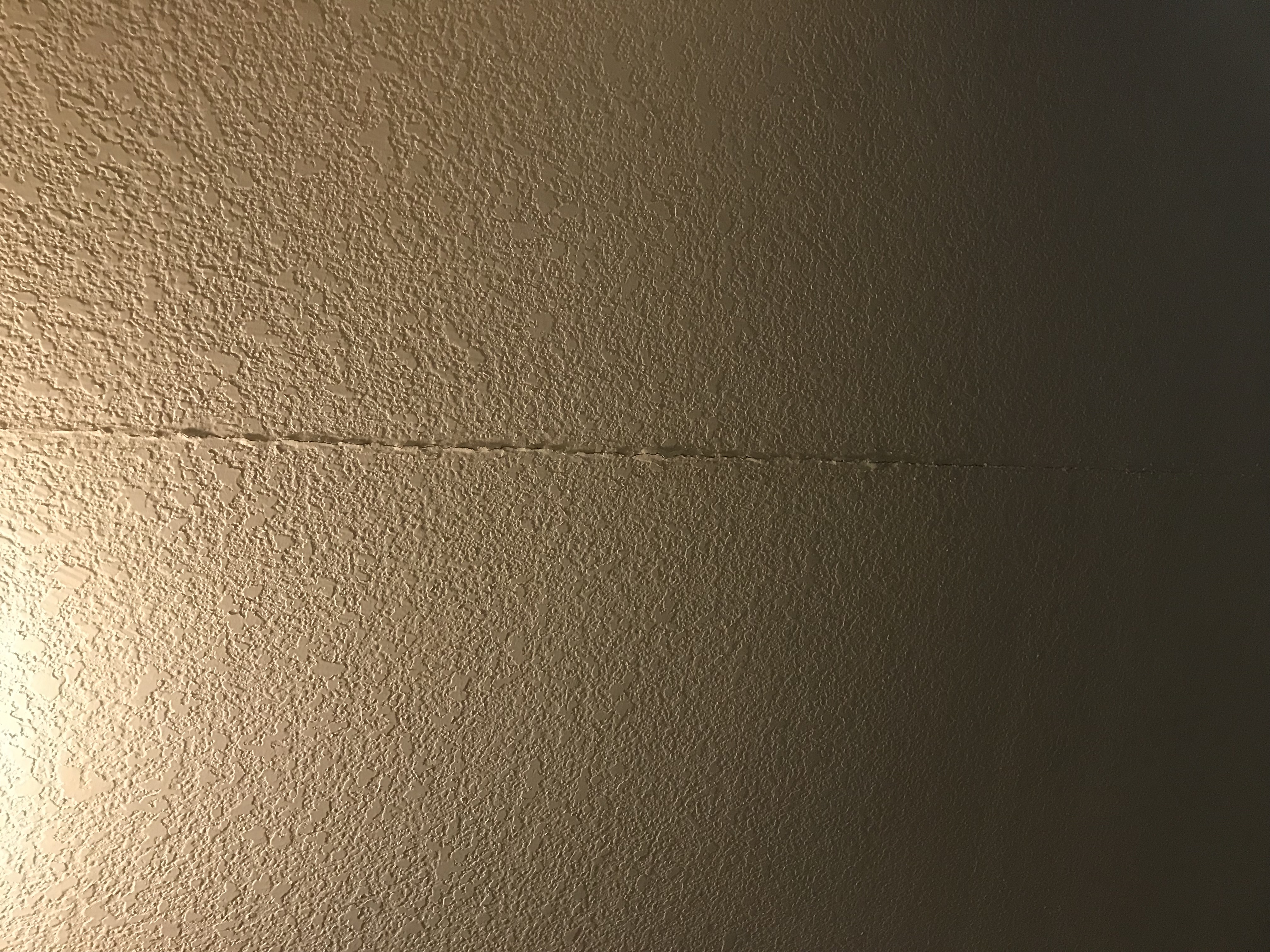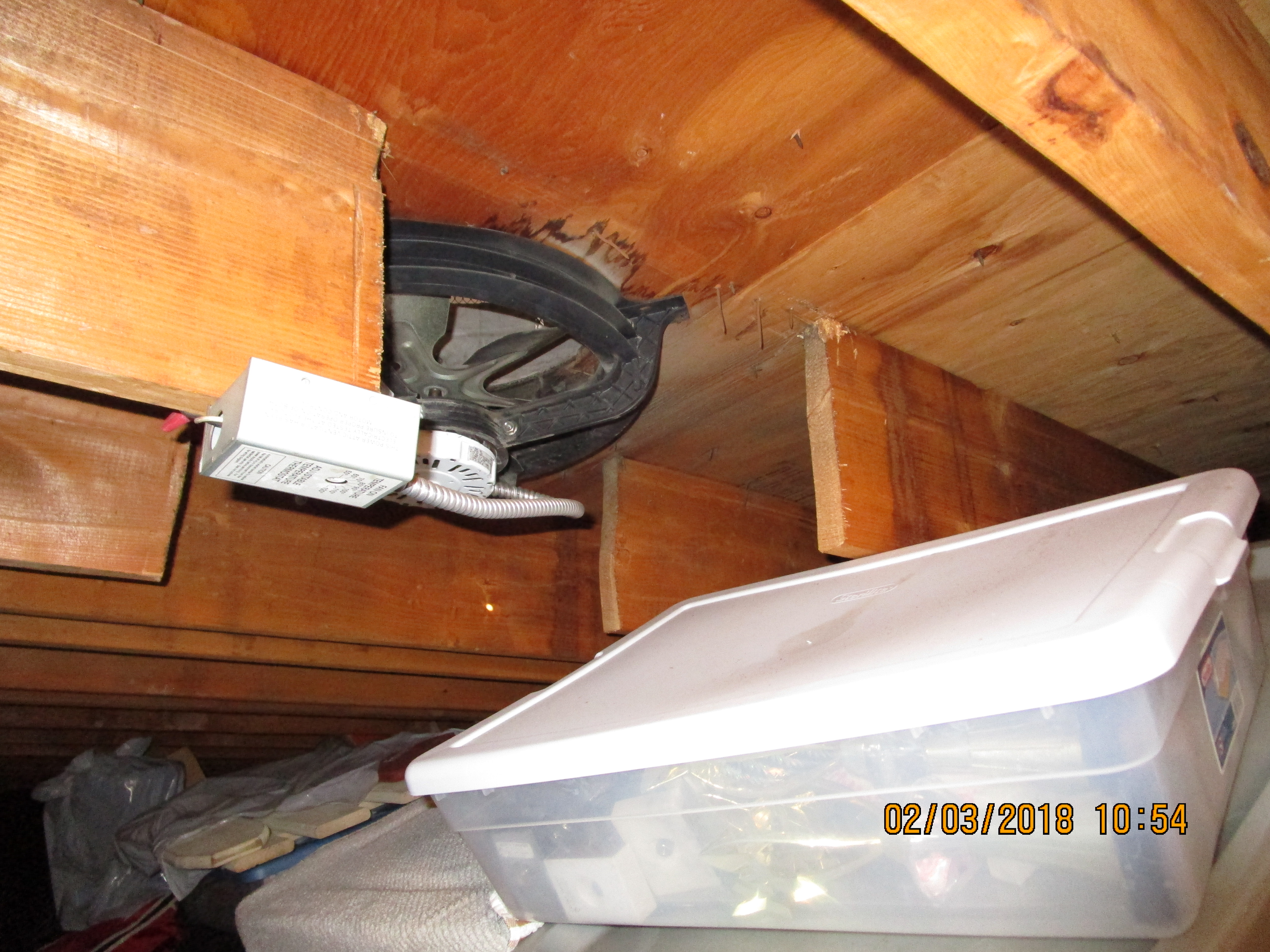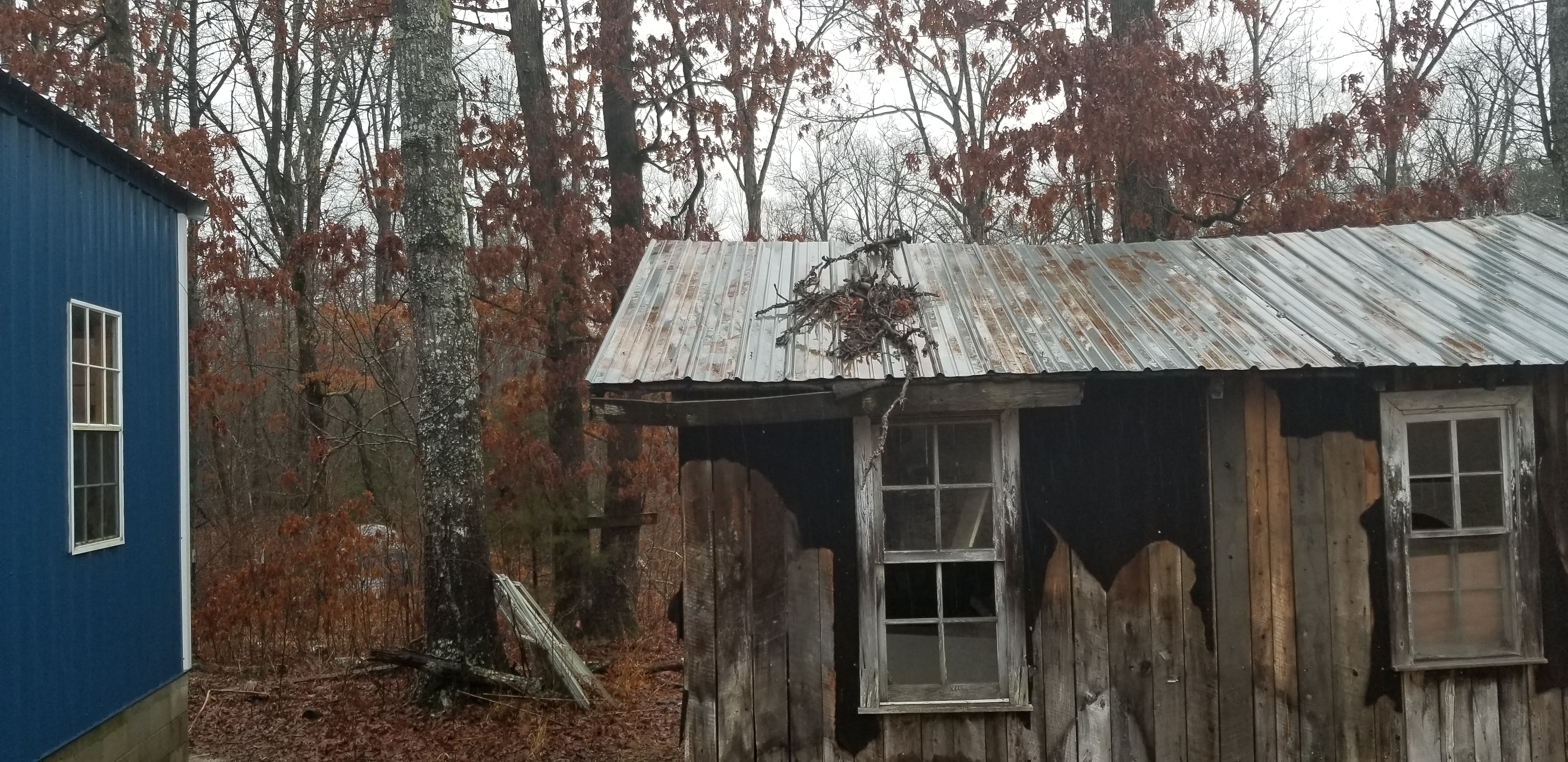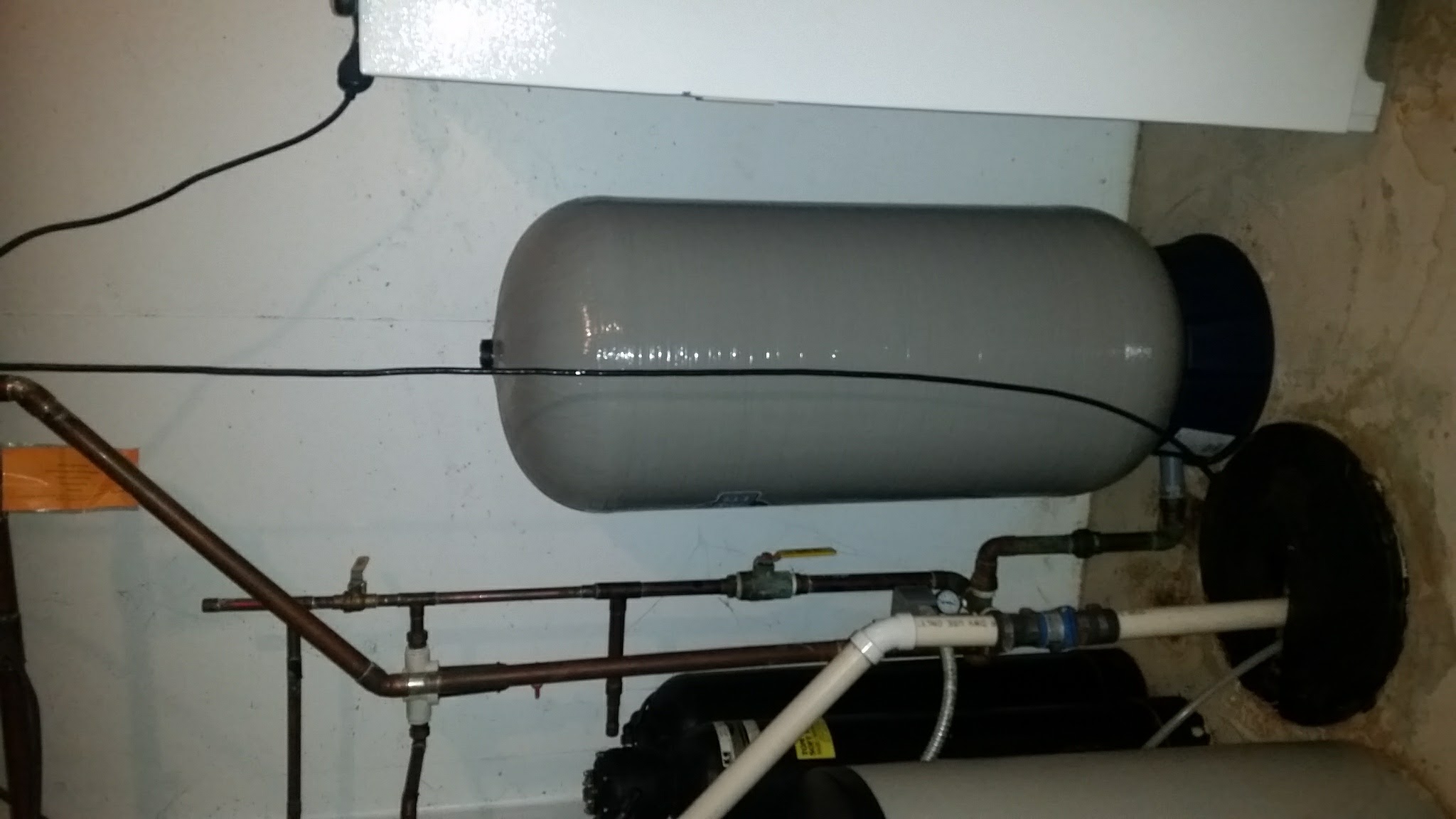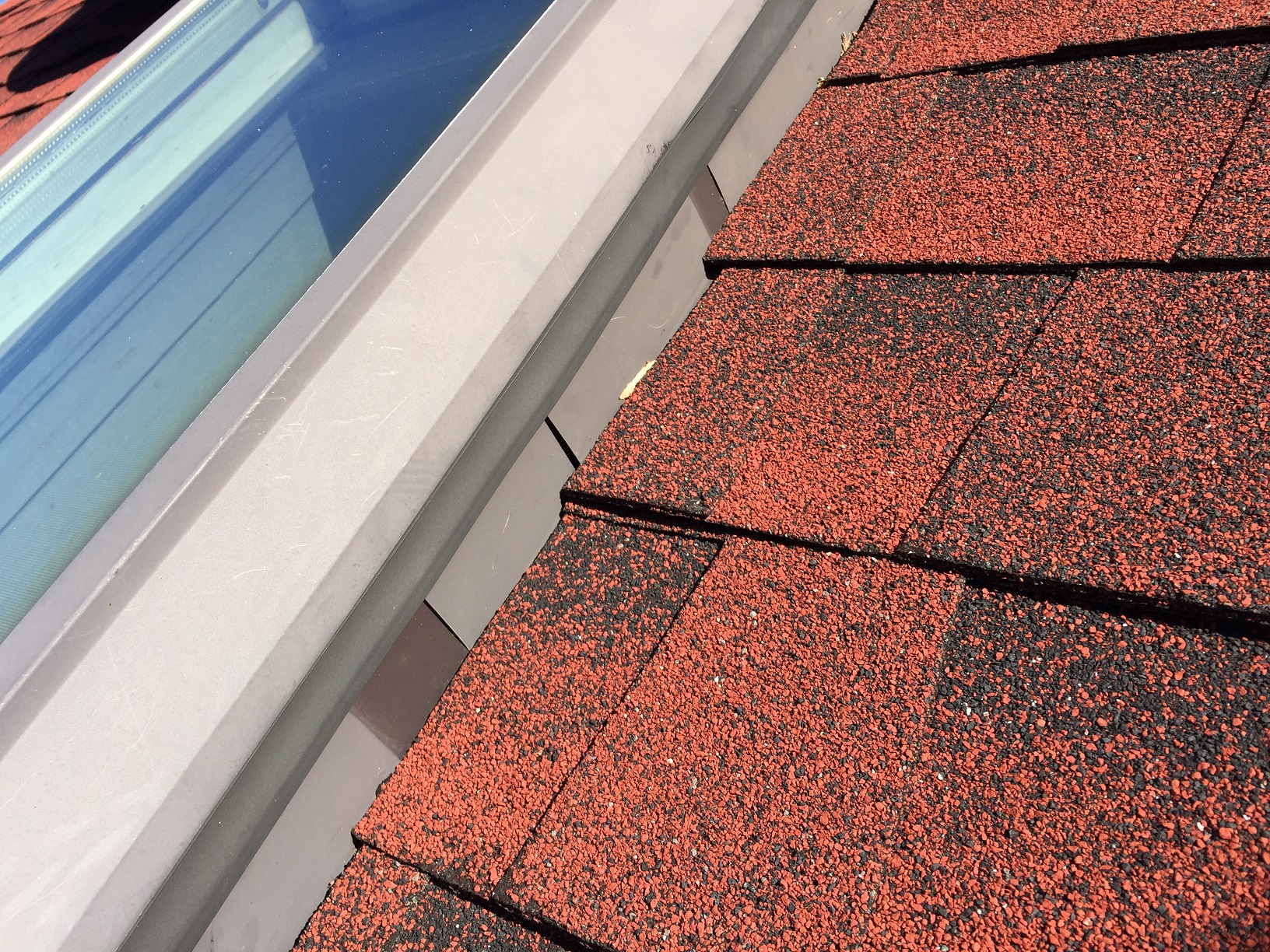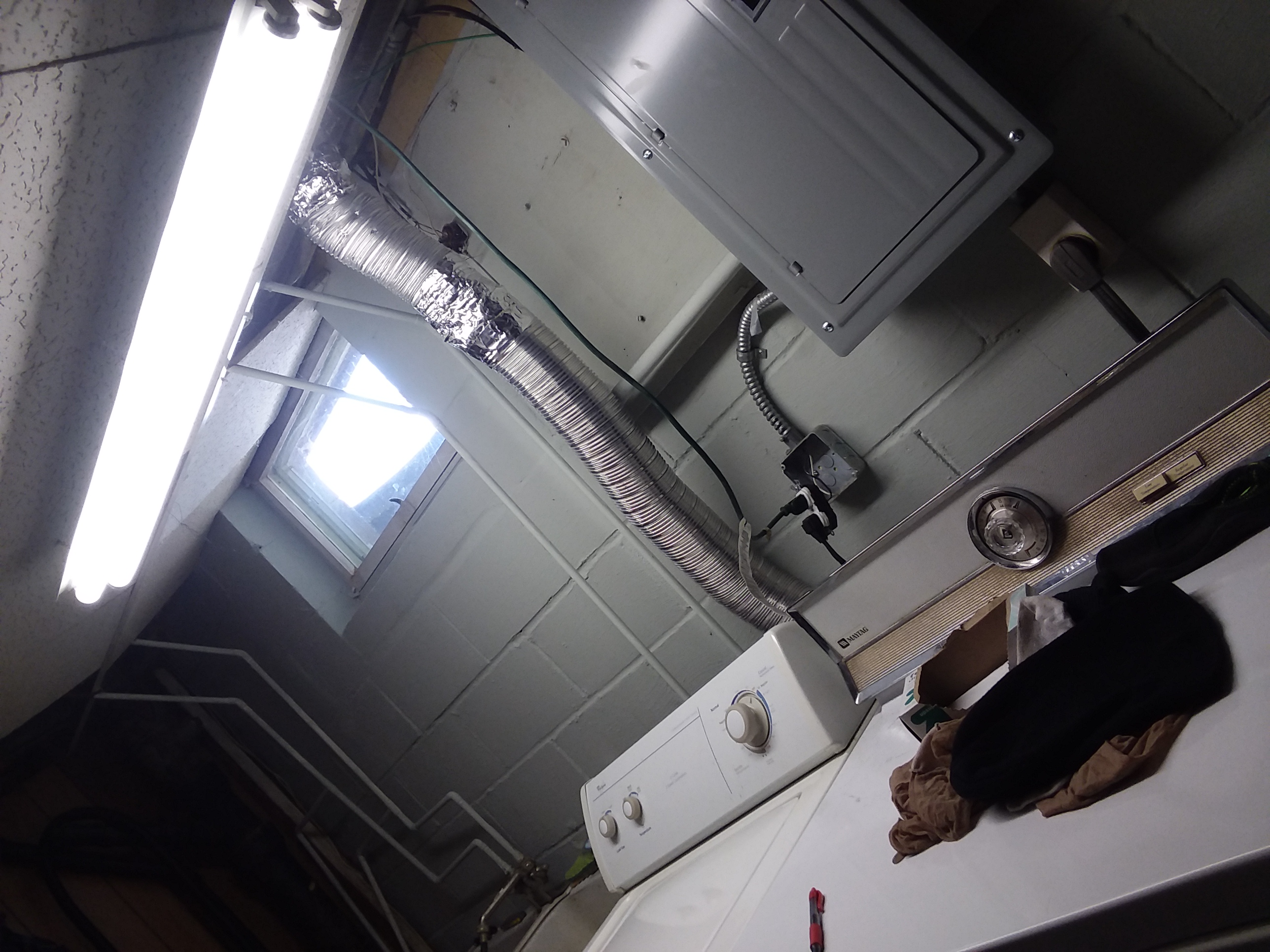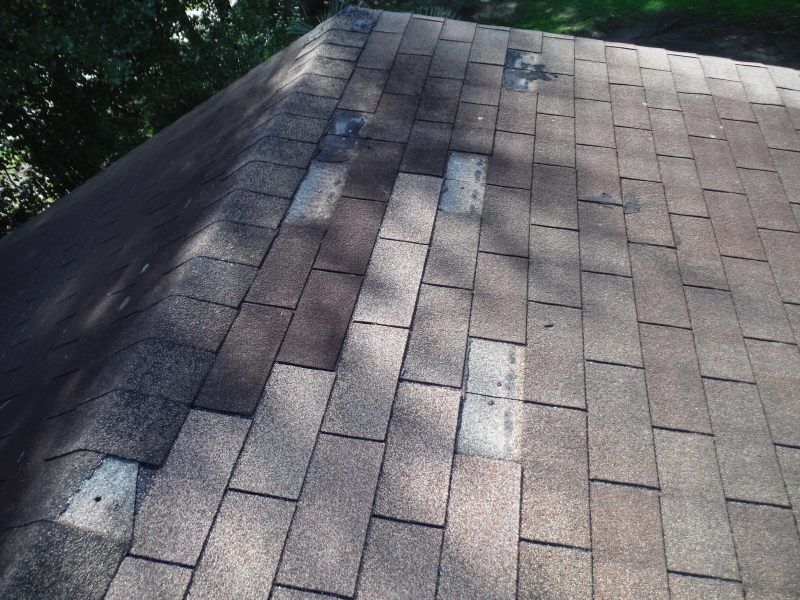Downspouts flashing and other drainage and water handling systems are very important. Without these systems in place water can destroy the foundation, the interior living spaces and possessions within the home. It is essential that all these systems be evaluated.
This ceiling crack in the sheetrock of the family room is less than the thickness of a quarter. The crack runs the full width of the room.This needs further investigation by a professional, this may be a serious safety or structual issue.
Joists: 2 x 12 joists observed. Joists were cut through for the installation of an attic fan.
joists are structural supports. Recommend repair and evaluation by a qualified person.
Sheathing: Plywood. Dry at time of inspection. View was limited due to home owners personal belongings restricting full access.
Electrical: Wiring splice not located inside the junction box. Recommend repair.
As a general contractor, I find it easy to differentiate between material defects and non-safety items that I should report. After reading the article, you explained to me that I have a set of standards and practices that I should follow when writing my inspection. In doing so, this will prevent opening myself up to unwanted liability.
A Garage Inspection
by Kenton Shepard;
Upon reading this article above I learned that it is important to closely evaluate the components of an entire system. From a distance the joist hangers appear to be installed correctly, however, once a closer look was taken the deck screws are visible. This is an incorrect installation. I also learned that when gusset plates are installed, it is important to suggest further evaluation by a structural engineer.
I chose for my essay roof inspection. The image is of a metal roof taken from ground level. This roof has a lot going wrong with it. There is rust that is noted. also with the inspection, you can see structure defects with the framing there is sagging of the ridge which should be evaluated by a structural engineer. There is no ridge cap or gutters in place leading to the decay of the soffits and eaves. I would note that this structure is in need of serious repair and that it is very unsafe to enter.
Writing an inspection report. Your inspection report should contain everything in the InterNACHI SOP. If items are not inspected it should be noted as to why the inspection was not performed such as unsafe, obstructed, or doing so could damage the system. It is a good idea to structure your reports around the InterNACHI SOP and to use it as a guide to ensure you cover all aspects of the SOP.
Window pictures has moisture between the glass. This is an insulated sealed window and the seal has failed causing moisture intrusion which is clouding up the window and may get worse with time. Recommend contracting a window expert to complete repairs on this window.

I chose the article on common electrical conductor types. When poorly installed or maintained electrical conductors are in the home in can cause an electrical fire. It is important for inspectors to know the different types of conductors so that they may identify unsafe conditions that may exist in the home.
Pictured here is the well pressure tank. At the time of inspection, this tank was functioning properly. This tank has a pressurized bladder inside that acts like a piston that will give your water system pressure when the pump is not running. Pressure in the system is dictated by the inline pressure switch. This pressure switch activates and deactivates the pump when pressure in the system drops below or achieves the set points. Pressure normally runs between 20 and 60 psi.
Homes that are not attached to city sewer use a septic system of some sort to dispose of waste water. These system utilize a holding tank for solids and a drain field for the liquids. The solids need to be pumped from the holding tank every 3 to 5 years depending on how many people are living in the house. The liquids leave the tank and are naturally dispersed into the drain field. Solids should never make it into the drain field. If they do replacement of the field may be necessary.
Aluminum wiring was substituted for copper wiring in some homes between 1965 and 1973 due to the rising price of copper at that time. Aluminum wiring can be a fire hazard due to the inherent qualities of the metal. Any aluminum wiring found in a home should be reported by the inspector and evaluated by a qualified electrician who is properly trained to deal with defective aluminum wiring.
This photo shows the step flashing on the side of a skylight. Step flashing is installed wherever a roof intersects a vertical sidewall such as the edge of a skylight or chimney. Step flashings are small, individual pieces of metal installed with each shingle course. They “step” with each course. They are usually covered with counter flashing to prevent water intrusion. In this instance they skylight itself acts as the counter flashing, and the step flashing is properly installed with each shingle course.
This is an image of the laundry room. The washer and dryer need to be pulled out at least 3 feet from the electrical service box. The outlet is not and must be (GCIF) protected and enclosed properly by a professional. The duct work is also not attached at the top correctly and is falling off.
“How a Home Inspector Can Stop Defamation” taught me that while the template letter in the article is sufficient legally, it is not a substitute for talking to the person who gave the unfair internet feedback or other public utterance. It helps to point out all of eh positives of the inspection, and getting a good understanding of why the person was not happy with the inspection. Offering an apology for some any wrong, such as I should have been more clear in the report, because an apology can defuse most situations and can be done without admitting a gross wrong, even if one was not committed. If a gross wrong was committed it is still best to apology for something in an attempt to show empathy for the client.
When inspecting a deck you must start from the bottom. If the bottom looks unsafe, do not walk to inspect and report unsafe. Most decks are designed to carry load of 40 to 60 pounds per square foot. Footing depths are normally below frost line or 12 inches. You must know your local deck building codes for they differ from locations.
Starting the course
I was doing an inspection in a house that was built in 2006 and when I went to see the roof I was able to see a few defects on the roof covering. The house was missing a few shingles, some of the shingles on the ridge were broken and you could see the hole of the nail in one of them and you can see some nails popping out from some of the shingles. You can tell that somebody did some repairs previously because of the tar and different color of the shingles. I had to keep that in mind in order to take a better look while inspecting the attic.
Moss covering large section of roof. Moss holds moisture and can damage the roof covering and reduce the lifespan of the roof covering. Moisture build up could also leak through the roof covering and damage the roof structure below it.

All exterior receptacles are required to have GFCI protection and a weather cover. The only ones that are not required to have GFCI protection are the receptacles that are used for snow or ice melting equipment that is installed on roofing.
